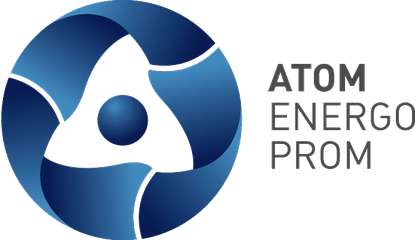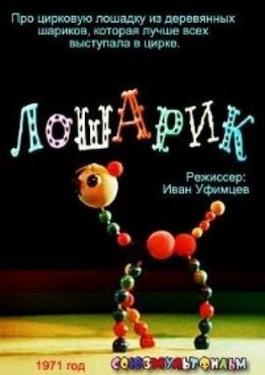
Ambient office = 92 nanosieverts per hour
Ambient outside = 122 nanosieverts per hour
Soil exposed to rain water = 122 nanosieverts per hour
Blueberry from Central Market = 70 nanosieverts per hour
Tap water = 66 nanosieverts per hour
Filtered water = 52 nanosieverts per hour
Dover sole – Caught in USA = 103 nanosieverts per hour

While arguments and lawsuits fly around in the U.S. at the city, state and federal level with regard to the location and operation of commercial nuclear power plants, other nations governments are pouring manpower and resources into the development and construction of nuclear power reactors. They are being built to supply both domestic markets and the export market of nations who have a strong commitment to nuclear power. The development and deployment of nuclear weapons is also supported by intense activity in the commercial nuclear industries.
A new report titled What Makes Russia’s Nuclear Sector Competitive from S&P Global Ratings was just published yesterday in which government support for the nuclear industry in Russia was contrasted with the Western Europe nuclear sector which is more tightly restricted because of environment and health dangers as well as growing competition with cheap natural gas and renewables whose prices are dropping.
There are eighty-nine business enterprises in Russia that are owned by the state-run stock company called the Atomic Energy Power Corporation (AEPC) in English. The Russian name for AEPC is Atomenergoprom. Since Russia commissioned its first nuclear power plant in Obninsk in1954 which generated five megawatts, nuclear power has been strongly supported. Russian state support includes capacity-supply agreements, low nuclear liabilities that only accrue after 2011 and ad hoc equity contributions. The Russian electric market design and low construction costs allow nuclear power to be competitive with other fuels available in Russia.
Low Russian nuclear plant construction costs are supported by vertical integration, the residual effects of a local currency devaluation in 2014 and a “learning curve” effect from the continued development and construction of nuclear power plants in Russia.
The S&P report says, “We expect domestic nuclear capacity to increase only moderately because electricity demand in Russia is stagnating, given only modest GDP growth, a significant potential for energy savings, and the government’s intention to avoid raising electricity prices through additional increases in capacity payments.”
Major risks to the Russian nuclear industry are mostly connected to international projects. They include tighter requirements for new nuclear plant construction which often cause delays. Nuclear phase out policies in Western Europe such as Germany’s decision to close all nuclear power plants could eventually impact the Russian nuclear export program. “That said, we believe exports of fuel and enrichment services should be resilient in the next several years because Russia mostly exports to nuclear-supportive countries under long-term contracts. Meanwhile, treatment of nuclear waste or decommissioning services could increase in importance.”
AEPC has excellent profitability and financial metrics when compared to the performance of other nations in the global nuclear industry. This provides “financial capacity” to fund new nuclear power plant construction both in Russia and abroad.
Russia says that it is involved in a “record number” or international nuclear power construction projects but they tend to be a bit vague about how many of those are actually firm and funded construction projects and how many are just “Memos of Understanding” to work towards actual contracts. The prime contractor for international projects is Atomstroyexport, another state-owned entity. AEPC is only directly involved in a project in Turkey and a project in Finland.
AEPC is involved in all phases of the civil nuclear cycle from mining uranium through fuel enrichment and fabrication to the generation of electricity in Russia. It is the sole operator of ten plants with a total of thirty-five power reactors. These plants generate twenty-nine gigawatts which represents eighteen percent of the production of electricity in Russia.

Ambient office = 77 nanosieverts per hour
Ambient outside = 81 nanosieverts per hour
Soil exposed to rain water = 85 nanosieverts per hour
Seedless finger grapes from Central Market = 76 nanosieverts per hour
Tap water = 96 nanosieverts per hour
Filtered water = 87 nanosieverts per hour

Part 2 of 2 Parts (Please read Part 1 first)
The Losharik was being prepared for a North Atlantic deployment when the accident occurred. A top Russian naval officer said that the fourteen men who died on the Losharik on July 1st prevented a “planetary catastrophe. The comment was made at the funeral for the men. Captain Sergei Pavlov is an aide to the commander of Russia’s navy. Pavlov praised the men as heros. He said that they died as they fought the fire to stop it from spreading in the submersible. He said, “With their lives, they saved the lives of their colleagues, saved the vessel and prevented a planetary catastrophe.”
Dmitry Peskov is a Kremlin spokesman. He said that he did not know of the comments by Captain Pavlov at the funeral for the men who died in the submersible. He stated that he was not aware of any broader threat to the world that might have been posed by the fire on the submersible. He told reporters in a conference call that there was no problem with the reactor on the Losharik.
Russia did not make the incident on the Losharik public until July 4th, three days after the incident took place. The Russians confirmed that the submersible was nuclear powered. It was also reported that the Russian Defense Minister told Russian President Putin that the nuclear reactor on the Losharik was completely sealed off when the fire broke out.
Previously to their public announcement, the Russian government would not say on what vessel the incident occurred or whether or not the vessel was nuclear powered. The Norwegians tried to get more details from the Russians but they said that no increased radiation had been detected in the area where the accident took place.
The fire aboard the Losharik is the most serious Russian navel incident since twenty sailors died on a Nerpa nuclear submarine in 2008. The worst Russian naval disaster after the fall of the Soviet Union took place in August of 2000. One hundred and eighteen crew members died when the Kursk nuclear submarine sank in the Barents Sea after an explosion onboard.
Norway has just announced that they have detected very high radiation levels around the wreckage of the Russian Komsomolets nuclear submarine which sank in 1989 after a fire broke out. Forty-two sailors died in that accident.
The Soviets were very sloppy with their nuclear power fleet. The bottom of the Barents Sea is littered with wreckage and decommission nuclear reactors from submarines. In one case, an entire nuclear submarine with its reactor still containing fuel was sunk in the Barents Sea. In the past few years, the Russian Navy has added to the nuclear mess in the Barents Sea. They recently notified Norway that leaking radioactive materials may pollute Norwegian fishing grounds.
The Russians and the Soviet Union before them have a bad record of delaying the release of information about major nuclear accidents in Russia and in the world’s oceans. And when they have released information it may be false or incomplete.
(Image – By Heribeto Arribas Abato – Own work, CC BY-SA 4.0, https://commons.wikimedia.org/w/index.php?curid=80236803)

Ambient office = 137 nanosieverts per hour
Ambient outside = 104 nanosieverts per hour
Soil exposed to rain water = 108 nanosieverts per hour
Avocado from Central Market = 50 nanosieverts per hour
Tap water = 87nanosieverts per hour
Filtered water = 59 nanosieverts per hour

Part 1 of 2 Parts
The Russian TASS news service reported that “On July 1, 14 submariners – sailors – died in Russian territorial waters as a result of inhaling combustion products aboard a research submersible vehicle designated for studying the seafloor and the bottom of the World Ocean in the interests of the Russian Navy after a fire broke out during bathymetric measurements.” The article went on to say that the fire was extinguished “thanks to the self-sacrificing actions of the team.”
Although the Ministry of Defense has not specified the location of the submersible that experienced the fire, it is believed that the incident occurred in the Barents Sea off Russia’s norther shore. The submersible was towed to the Russian North Fleet HQ in Severomork. An investigation of the incident is being carried out.
The submersible was identified as Losharik (AS-12) by the Russian-language news service RBC. The Losharik is nuclear-powered. It is considered to be a major asset for the Russian Main Directorate of Deep-Sea Research (GUGI). GUGI develops and operates a fleet of highly specialized submarines and submersibles. This fleet is used for deep sea research. It is also thought to be used for covert operations. GUGI does is not under the command of the Russian navy. It reports directly to Russian military intelligence known as the GRU. Little is known about the Losharik which is among the most mysterious of the GUCI fleet. The Losharik was deployed in the 1990s. It is thought to carry a crew of twenty-five. It can dive to depths of six-thousand feet. The weight of the Losharik is around two thousand pounds. It is thought to be about two hundred feet long.
The Losharik can travel attached to the belly of a specially constructed Delta III nuclear ballistic missile submarine. Little is known about the purpose and capabilities of the Losharik. Reportedly, the Losharik was developed in order to cut undersea communications and other cables.
Military analyst H.I. Sutton says that the Losharik is one of “range of special missions boats based at the Russian Navy’s Northern Fleet’s Olenya Guba base. This base is one of several set up by the Soviets during the Cold War on the inhospitable but strategically important Kola Peninsula, far away from civilization.”
The name of the Losharik is taken from a popular Russian cartoon horse that is made up of juggling balls. Western military analysts believe that the interior of the sub contains a series of seven spherical compartments. This is based on consideration of deep-sea missions intended for the Losharik. While the multiple spherical compartments in the submersible reduces living space and space for equipment and propulsion, it makes the submersible much stronger and allows it to dive to greater depths than the design of conventional subs.
It is suspected that the Russian government will use the Losharik capabilities for deep dives to extend Russia’s territorial claims to the floor of the Arctic Sea. In 2012, the Losharik took samples on the ocean floor in order to prove that the Lomonsov and Mendeleyev Ridges are part of the Russian continental shelf. If this proves to be true, it can be used to establish Russian claims to large areas of the Arctic Sea. As global warming in the Arctic Sea is reducing the ice that covers the Arctic Sea for most of the year, nations that surround the Sea are working to secure rights to exploit the mineral wealth believed to be under the Arctic Sea.
Please read Part 2
(Image – By Source (WP:NFCC#4), Fair use, https://en.wikipedia.org/w/index.php?curid=61263153 film poster for the 1971 Soviet animated film Losharik)